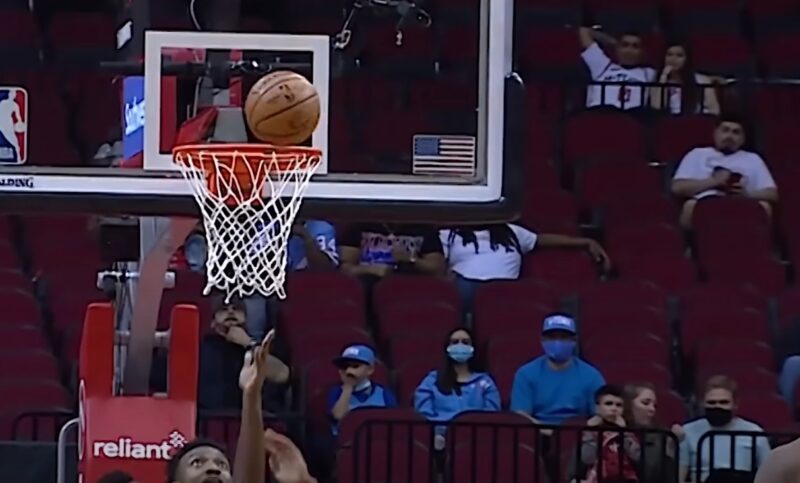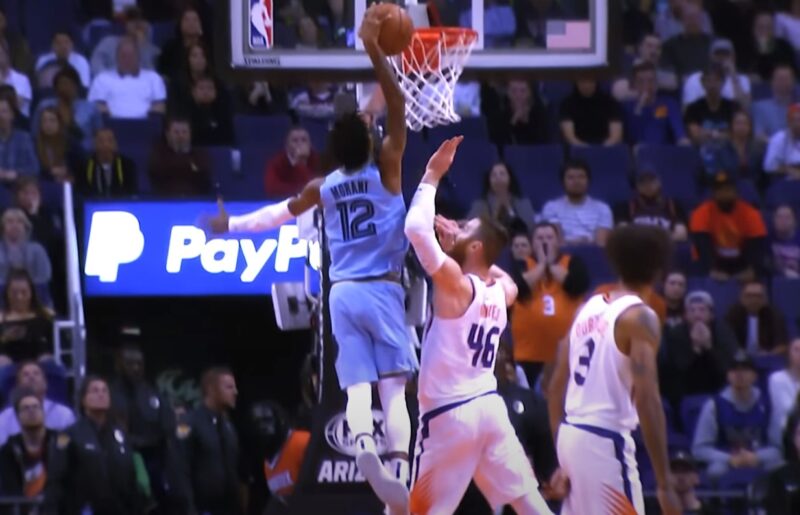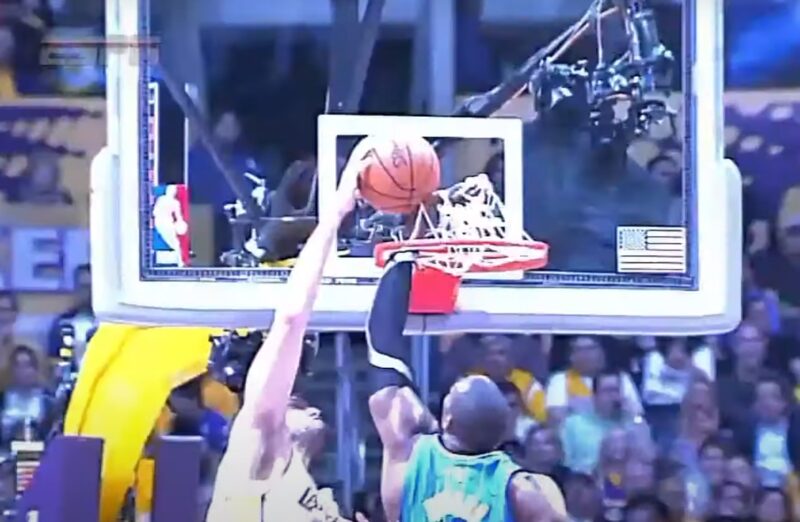Basketball is an exhilarating sport with its fast-paced action and spectacular plays. One crucial aspect of the game that can sometimes leave fans and even players puzzled is “goaltending.”
In this article, we’ll break down the concept of goaltending in basketball, explaining what it is, when it occurs, and its impact on the game.
What Does It Mean?

Goaltending in basketball occurs when a defensive player interferes with a shot attempt by the offensive team in a way that is against the rules. In simpler terms, it’s when a defender disrupts a shot while it’s on its way to the basket, and that shot would have had a reasonable chance of going in. Here are the key elements of goaltending:
- Timing: Goaltending can only occur if the ball is on its way down towards the basket. If the ball is on its way up or is still in the upward trajectory after a shot, it can be blocked legally.
- Basket Interference: Goaltending also includes situations where a player reaches through the basket to block a shot. This is not allowed, as it interferes with the ball’s path.
- Rim Interference: If a player touches the rim or the net while a shot is on the rim, and this contact affects the ball’s path, it’s considered goaltending.
When Does It Happen?

As mentioned earlier, if a defender blocks a shot on its way down, it’s goaltending. This is because once a shot begins its descent towards the basket, it’s considered a live ball, and defenders can’t interfere with it. The “cylinder” refers to the imaginary space above the rim.
If a defender reaches into this cylinder and touches the ball while it’s in this area, it’s a goaltending violation. Moreover, while hanging on the rim after a dunk can sometimes be a spectacular display of athleticism, doing so in a way that interferes with the ball is goaltending.
If a player grabs the rim and prevents the ball from going through the hoop, it’s a violation. Also, if a defender hits the backboard while trying to block a shot, and this contact alters the ball’s trajectory, it’s also considered goaltending.
Impact on the Game
Understanding goaltending is crucial because it can have a significant impact on the outcome of a basketball game. When goaltending is called, the offensive team is awarded two points if the shot would have gone in without the interference. If the shot was a three-pointer, the offensive team gets three points.
Goaltending can also shift the momentum of a game. If a crucial shot is goaltended, it not only gives the offensive team points but also energizes them and their fans. In some cases, this can lead to foul trouble for the defensive player responsible.
If a player goaltends and makes contact with the shooter, they may be called for a foul in addition to the goaltending violation.
Common Controversies in Goaltending Calls
Goaltending calls in basketball have sometimes been a subject of controversy and heated debates. Let’s explore some common scenarios where goaltending calls can be contentious:
Block or Goaltend?
Determining whether a defender’s action was a clean block or goaltending can be challenging, especially in fast-paced moments. When a defender times their jump perfectly and swats the ball away just before it reaches the apex of its trajectory, it’s a clean block.
However, if the ball is on its way down, it’s goaltending.
Fingertip Grazes
Basketball fans have witnessed instances where a defender’s fingertips barely graze the ball on its way down. In these cases, the question arises: did the defender alter the ball’s path significantly? The officials must make split-second decisions in such situations.
Basket Contact
Sometimes, a player’s hand may make contact with the net or rim while attempting to block a shot. The key question is whether this contact influenced the ball’s trajectory. Determining this in real-time can be challenging for referees.
Inconclusive Video Evidence
With the advent of instant replay in basketball, officials have the opportunity to review close calls, including goaltending. However, not all situations provide clear-cut evidence, leading to continued debates.
How to Avoid This?

For aspiring basketball players, learning how to avoid goaltending is crucial to becoming a better defender. Here are some tips to help players prevent these violations:
1. Timing is Key!
Understanding the timing of a shot is critical. As a defender, wait until the ball reaches its peak or is on its way down before attempting a block.
2. Practice Shot-Blocking
Work on your shot-blocking skills during practice sessions. Develop the ability to time your jumps and reach the ball without making contact with the rim or the net.
3. Know the Rules
Familiarize yourself with the goaltending rules in your league. Different leagues may have slight variations, so be aware of the specific rules that apply to your game.
4. Stay Vertical
When blocking a shot, try to go straight up and down. Avoid reaching across the shooter’s body, as this can lead to fouls and goaltending violations.
5. Avoid Desperation Plays
Sometimes, players attempt to block shots out of desperation, especially when their team is trailing. It’s essential to maintain composure and make calculated defensive moves.
FAQs
Can goaltending be called if the ball hits the backboard first before a defender blocks it?
Yes, if the ball is on its way down and a defender touches it, it’s considered goaltending, regardless of whether it has touched the backboard.
What happens if a goaltending violation occurs during a free throw attempt?
If it happens during a free throw attempt, the free throw is counted as made, and the offensive team is awarded one point. The defensive team cannot block or interfere with free throws in any way.
Can a player goaltend their own team’s shot?
No, goaltending can only be called when a defender interferes with the opponent’s shot attempt. A player cannot goaltend their own team’s shot, even if they do so unintentionally.
Is it goaltending if a player blocks a shot after it hits the rim and starts to bounce away from the basket?
No, once the ball hits the rim and begins to bounce away, it is no longer eligible for goaltending. It can only occur while the ball is on its way down or when it’s within the cylinder above the rim.
Can a player be ejected from a game for repeated goaltending violations?
While these violations can lead to personal fouls, they alone do not result in ejections. A player can be ejected from a game for accumulating multiple personal fouls, technical fouls, or unsportsmanlike conduct, but not specifically for goaltending violations.
Summary
For players, avoiding goaltending requires skill, timing, and knowledge of the rules. By staying vertical, practicing shot-blocking, and remaining aware of league-specific regulations, players can enhance their defensive capabilities and contribute to their team’s success.
